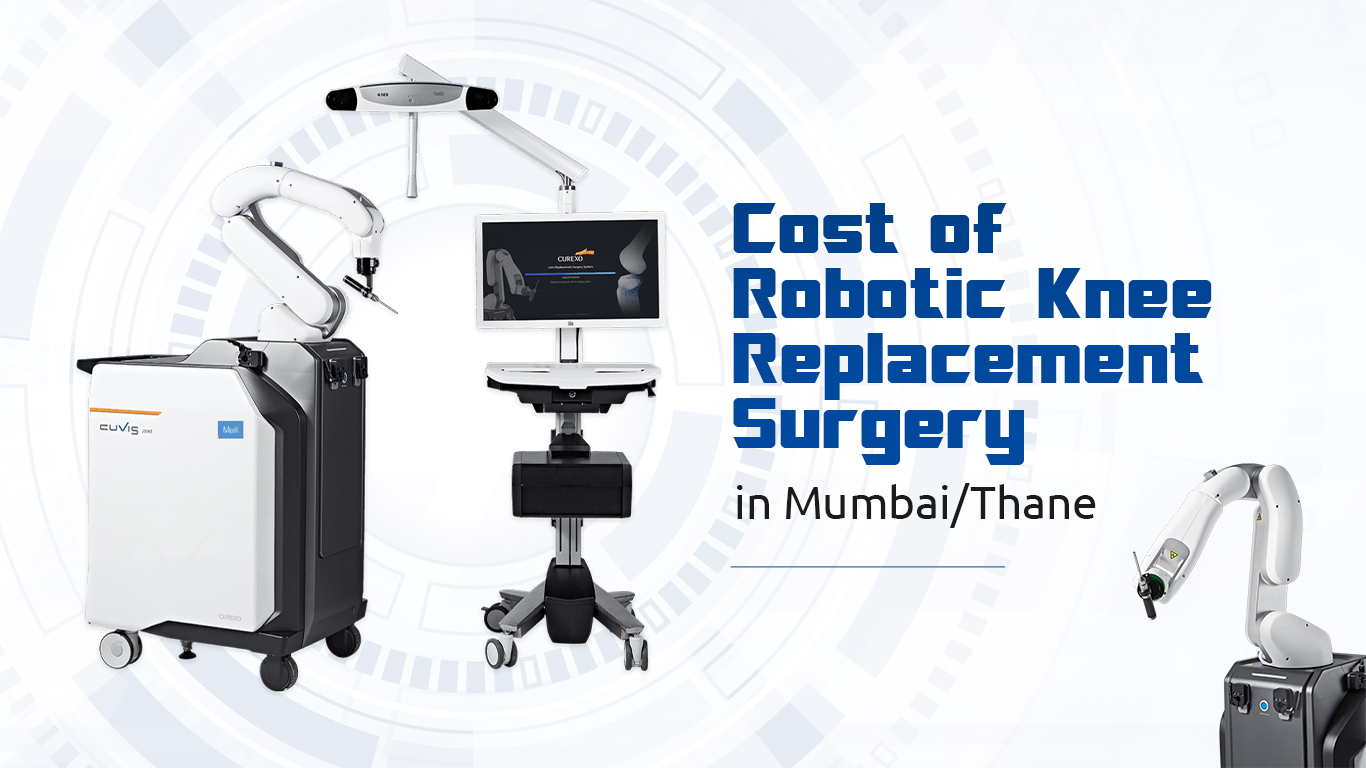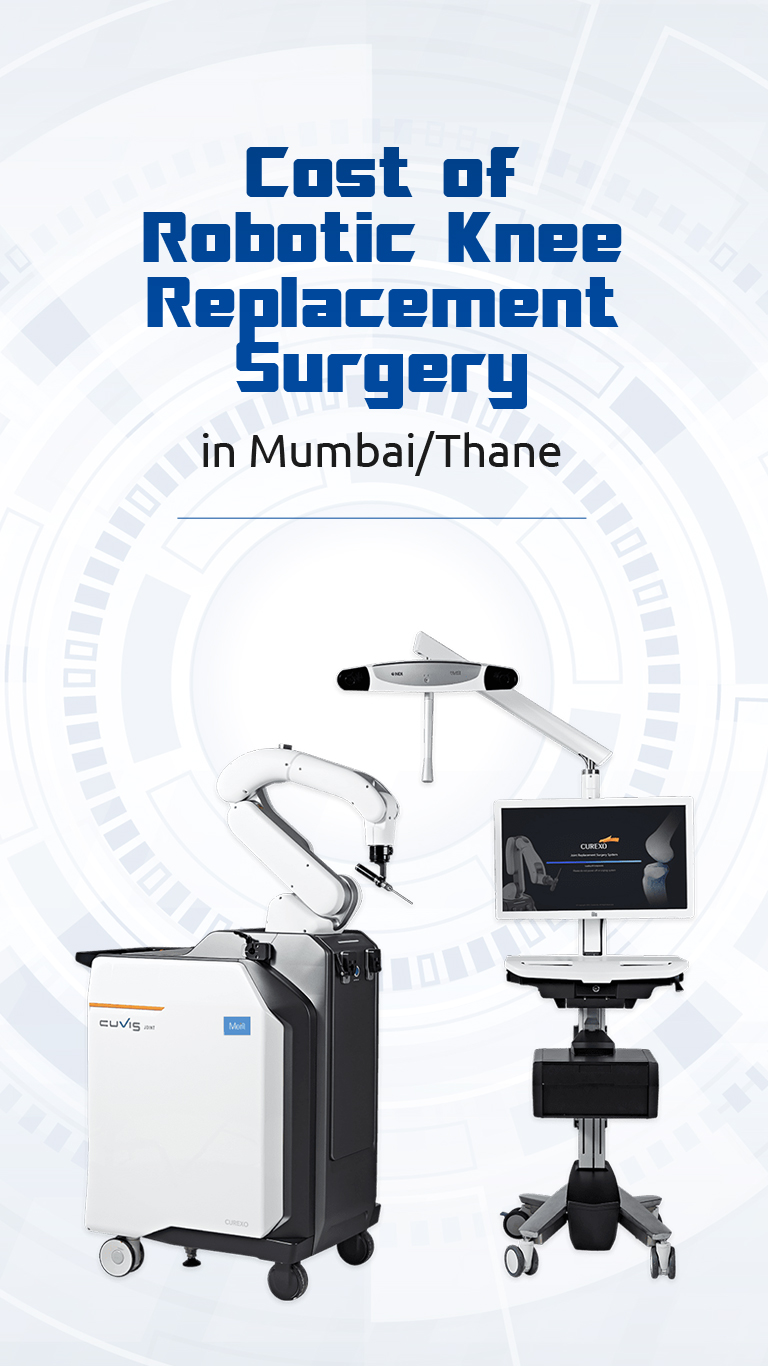

Robotic technology has significantly advanced the field of orthopedic surgery, particularly in the area of total knee replacement. Robotic assisted knee replacement surgery offers potential benefits such as improved surgical precision, enhanced implant alignment, and personalized patient care. However, like any medical innovation, there are both pros and cons associated with robotic total knee replacement surgery. This article explores the advantages and disadvantages of this advanced surgical technique.
Several factors contribute to the overall cost of robotic knee replacement surgery. Understanding these factors will help individuals assess the financial implications of undergoing the procedure-
One of the primary advantages of robotic total in knee replacement surgery is its ability to improve precision and accuracy. Robotic systems utilize advanced imaging techniques to create a 3D model of the patient’s knee, allowing surgeons to plan the surgery with detailed accuracy. During the procedure, the robot assists the surgeon in executing precise cuts, optimizing the alignment and positioning of the implant. This improved accuracy can lead to better outcomes, reduced complications, and improved long-term durability of the implant.
The systems of robotic knee replacement surgery enables a personalized approach. The preoperative planning phase involves the creation of a patient-specific surgical plan based on the individual’s unique anatomy. The robotic arm then follows this plan during the surgery, ensuring that the procedure is tailored to the patient’s specific needs. This customization can result in better implant fit, improved joint stability, and enhanced overall patient satisfaction.
Robotic-assisted knee replacement surgery often employs a minimally invasive technique, which offers several advantages over traditional open surgery. The smaller incisions used in this approach result in reduced tissue trauma, less blood loss, and a faster recovery time. Patients typically experience less pain and require shorter hospital stays, leading to a quicker return to daily activities and improved quality of life.
Accurate implant alignment is crucial for the success and longevity of a knee replacement. Robotic systems can ensure precise alignment by guiding the surgeon during bone preparation and implant placement. Proper alignment can lead to improved joint function, reduced wear and tear on the implant, and decreased risk of implant loosening or failure. This advantage is particularly important for younger or more active patients who may put increased stress on their knee joints.
Robotic systems provide surgeons with real-time feedback during the procedure. This feedback includes information on the patient’s anatomy, soft tissue balance, and implant positioning. By having this data readily available, surgeons can make informed decisions, make necessary adjustments, and achieve optimal surgical outcomes. Real-time feedback helps minimize potential errors and enhances the overall safety and effectiveness of the procedure.
One of the primary limitations of robotic knee replacement surgery is the cost associated with the technology. Robotic systems are expensive to acquire and maintain, which can result in higher surgical expenses for patients. The cost of robotic knee replacement surgery may limit the availability and accessibility of robotic procedures, particularly in regions with limited resources or healthcare budgets. It is essential to consider the financial implications when deciding on the use of robotic technology in knee replacement surgery.
Robotic-assisted knee replacement surgery relies heavily on advanced technology, including imaging systems, software, and robotic arms. Any technical failure or malfunction of these components can impact the surgical procedure. Surgeons must have backup plans and the necessary skills to continue the surgery manually if the robotic system encounters difficulties. It is crucial to ensure proper maintenance, technical support, and backup resources to minimize the risk of interruptions during the surgery.
While robotic total knee replacement surgery has shown promising outcomes in the short term, there is a relatively limited amount of long-term data available to assess its durability and effectiveness compared to traditional techniques. As robotic technology continues to evolve, ongoing research and long-term studies are necessary to evaluate the longevity of robotic-assisted implants and their clinical outcomes over extended periods.
Robotic total knee replacement surgery offers several advantages, including enhanced precision, personalized treatment, and improved implant alignment. These benefits can result in better surgical outcomes, faster recovery, and increased patient satisfaction. However, the cost of the technology, the learning curve for surgeons, technical limitations, dependency on technology, and limited long-term data are important considerations when evaluating the use of robotics in knee replacement surgery. Ultimately, a thorough discussion between patients, surgeons, and healthcare providers is essential to determine the appropriateness and feasibility of robotic-assisted procedures in each individual case.
Robotic Knee Replacement Surgery in India ,” we are your trusted destination for cutting-edge knee care and advanced robotic surgical solutions. Our dedicated team of experts, located in the vibrant cities of Mumbai and Thane, is committed to providing you with a comprehensive range of services to alleviate knee pain and enhance your quality of life.
Our state-of-the-art offerings include Robot Assisted Knee Replacement Surgery in Thane , Robotic Partial Knee Replacement Surgery, Robotic Hip Replacement Surgery, Robotic Knee Arthroscopy Surgery, and Robotic ACL Reconstruction Surgery. We take pride in our expertise in knee pain management and surgical interventions, ensuring that you receive the highest standard of care.
Our Robotic Knee Replacement surgeon in Mumbai boasts a wealth of experience and unwavering dedication to knee surgeries. With a track record of over 3000 successful procedures, their expertise and commitment ensure you’re in capable hands when you entrust your knee health to us. Your well-being is our priority.
Choose “Robotic Knee Replacement Surgery” for a pain-free, active life, and let us redefine your knee health with precision and innovation.
Please Contact use today if you are looking for Cost of Robotic Knee Replacement surgery in Thane or Mumbai.
Arora Clinic, Shop No. 16, Block 2, Emerald Plaza, Hiranandani Meadows, Glady Alvares Road, Behind Standard Chartered Bank, Thane west - 400610
Phone: +91 93260 04795
Copyright © 2023 Arora Clinic. Website is Designed and Handle by Hopeland Healthcare.
WhatsApp us
